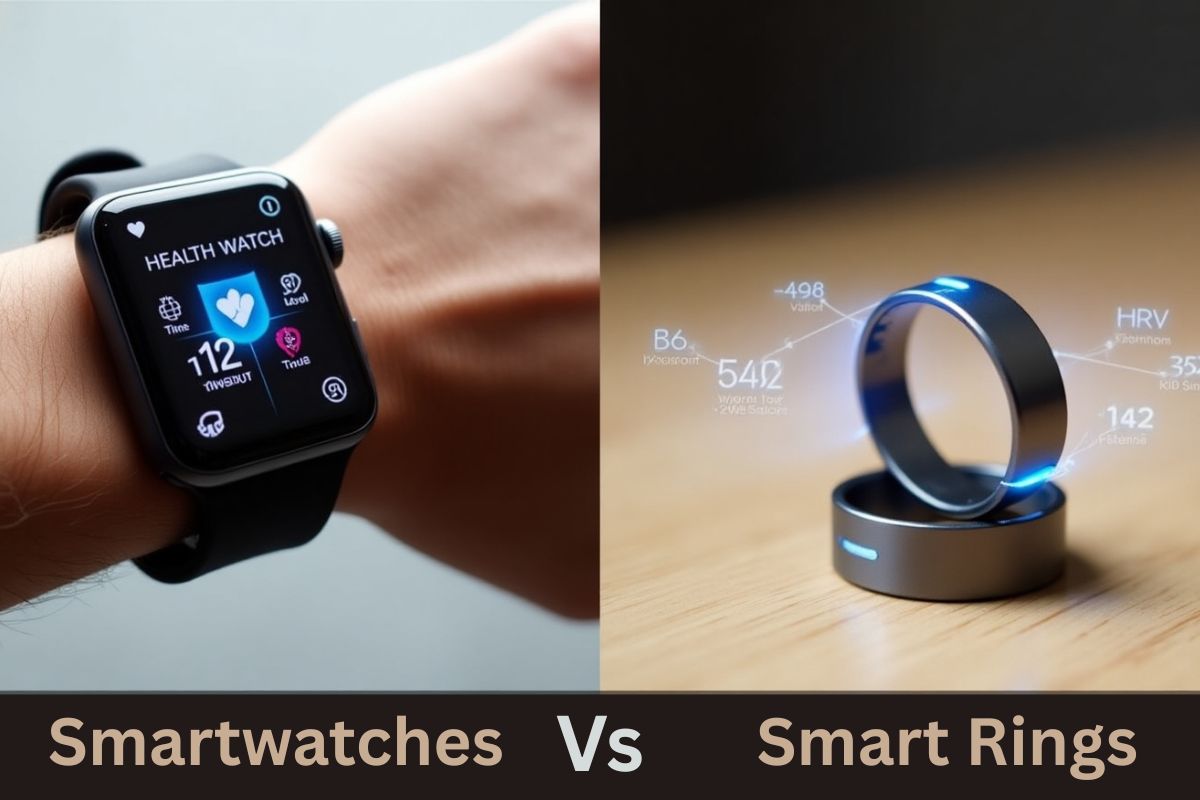Wearable devices have become more diverse than ever, but two types stand out: smartwatches and smart rings. Smartwatches have led the way since the mid-2010s, while smart rings gained popularity in 2024 as a more discreet option. Both promise to keep you connected, track your health, and motivate your workouts, yet each brings its strengths and trade-offs in battery life, form factor, sensor capabilities, and user experience.
Whether you’re a tech enthusiast, a fitness freak, or someone looking to integrate health monitoring into your everyday routine, this comparison provides everything you need to choose the ideal wearable device for 2025 and beyond.
Design and Comfort:
On the design side, your choice hinges on personal style. Smartwatches feature wrist-hugging screens and weigh between 30-70g, creating a bold visual statement. Their interchangeable bands, available in silicone, leather, or nylon, let you match colors to your outfit, transitioning seamlessly from the gym to the office. However, their larger size can trap sweat, pinch skin, and feel cumbersome during prolonged wear.
Smart rings, by contrast, prioritize comfort. Made from ultra-thin titanium or ceramic, they weigh just 2-4g and mold naturally to your finger, allowing your skin to breathe. With no screen to disrupt your aesthetic, they remain discreet, ideal for tracking health metrics during meetings or nights out without attracting notice.
Ultimately, the decision between a smartwatch’s interactive display and a smart ring’s barely-there feel depends on your aesthetic preferences and lifestyle. Let your daily needs guide you, whether you value quick notification checks or prefer a lightweight, unobtrusive device for 24/7 wear.
Health & Activity Tracking
This is where smartwatches have a major upper hand over smart rings. Smartwatches are full-featured wrist devices offering a plethora of functions, displaying live stats like heart rate, calories burned, or pace right on the screen. Many also include blood oxygen monitors that provide real-time health alerts. In contrast, smart rings fall short when it comes to live workout feedback.
Health-wise, smartwatches monitor heart rate trends, blood oxygen levels, and sleep patterns in real time. Smart rings, on the other hand, excel at sleep analysis. They offer detailed breakdowns of sleep stages and can even detect snoring, providing wellness insights that go deeper than many smartwatches. However, rings still have a long way to go in terms of fitness tracking. They can’t offer live monitoring of your workouts, lack built-in GPS, and don’t capture sport-specific metrics like swim strokes or yoga poses.
That said, rings are great for those focused on a limited but deeply continuous set of metrics like heart rate variability (HRV), skin temperature, blood oxygen, movement, and sleep quality. Their compact size makes them ideal for maintaining an active lifestyle without being overwhelmed by data.
Battery & Charging
Battery life and charging efficiency can make or break any wearable choice. Most smartwatches need charging every one to four days, while smart rings typically last four to eight days on a single charge.
Smartwatches drain power faster due to larger displays, internet connectivity, voice assistants, and installed apps. Though some watches can last a week, that often requires disabling key features like notifications or continuous health sensing.
Watches generally take 1–2 hours to fully charge and rely on magnetic docks or wireless pads. Smart rings, by contrast, recharge in under an hour using a compact dock—just snap the ring into place. With a smartwatch, you might need to adopt a nightly charging routine to avoid missing your morning metrics. Smart ring charging feels more effortless—you can simply pop it on the charger during daily routines when it’s off your finger anyway.
User Interaction & Notifications
User interaction is a key difference. Smart rings lack displays, so they rely on haptic cues, gentle vibrations, and notifications via a companion app on your smartphone. You’ll feel subtle pulses for calls, messages, or activity milestones.
Smartwatches, by contrast, have vibrant touch screens that let you read texts, answer calls, check maps, and even install third-party apps directly on the device.
If you want an always-available screen and the ability to interact with notifications or apps without reaching for your phone, a smartwatch is indispensable. But if you prefer to reduce screen time and only be alerted when truly necessary, the smart ring’s quiet tap is the better choice. It helps you stay connected without constant distraction.
Smart Features
Smartwatches and smart rings offer very different smart functionalities. Watches support a wide range of apps, voice assistants, and seamless integration with your phone, letting you send SOS alerts, make calls, or control music on the go.
Smart rings, by contrast, keep things simple, vibration alerts for calls, texts, and select app notifications with no screen to interact with. Both devices typically support contactless payments via NFC, but watches offer more advanced security with on-device PINs and automatic locking when removed from the wrist.
Price & Value
Cost is often a deciding factor. Entry-level smart rings range from $200–$250, with premium models going up to $400–$450. Smartwatches start at around $150 for basic fitness models and can exceed $500 for top-tier versions with LTE, advanced sensors, and high-end materials.
There are premium models like the Apple Watch Ultra 2 at $799 or the Garmin Epix Pro (Gen 2) at $899, but you’ll also find excellent budget options like the Amazfit Bip U Pro at just $60.
While smart rings don’t usually break the bank, they do require a bit of an investment. Affordable models start around $100 and focus primarily on health tracking. Mid-range options like the Oura Gen 3 or Ultrahuman AIR cost $299–$349, similar to advanced smartwatches.
When evaluating value, think long-term, consider battery life per charge, usefulness of notifications, and how often you’ll rely on sensors or apps. A smart ring may offer more bang for your buck if you mainly want passive health tracking and dependable battery life. A smartwatch, though pricier, can act as a phone replacement in many situations, a convenience that’s worth the cost for some users.
Finally, Who It’s For
Smart Ring Ideal User: You’re a data-driven wellness enthusiast who prioritizes sleep quality, recovery, and minimal device distractions. You wear jewelry daily, value battery life, and prefer subtle notifications over screen-time temptations.
Smart Rings
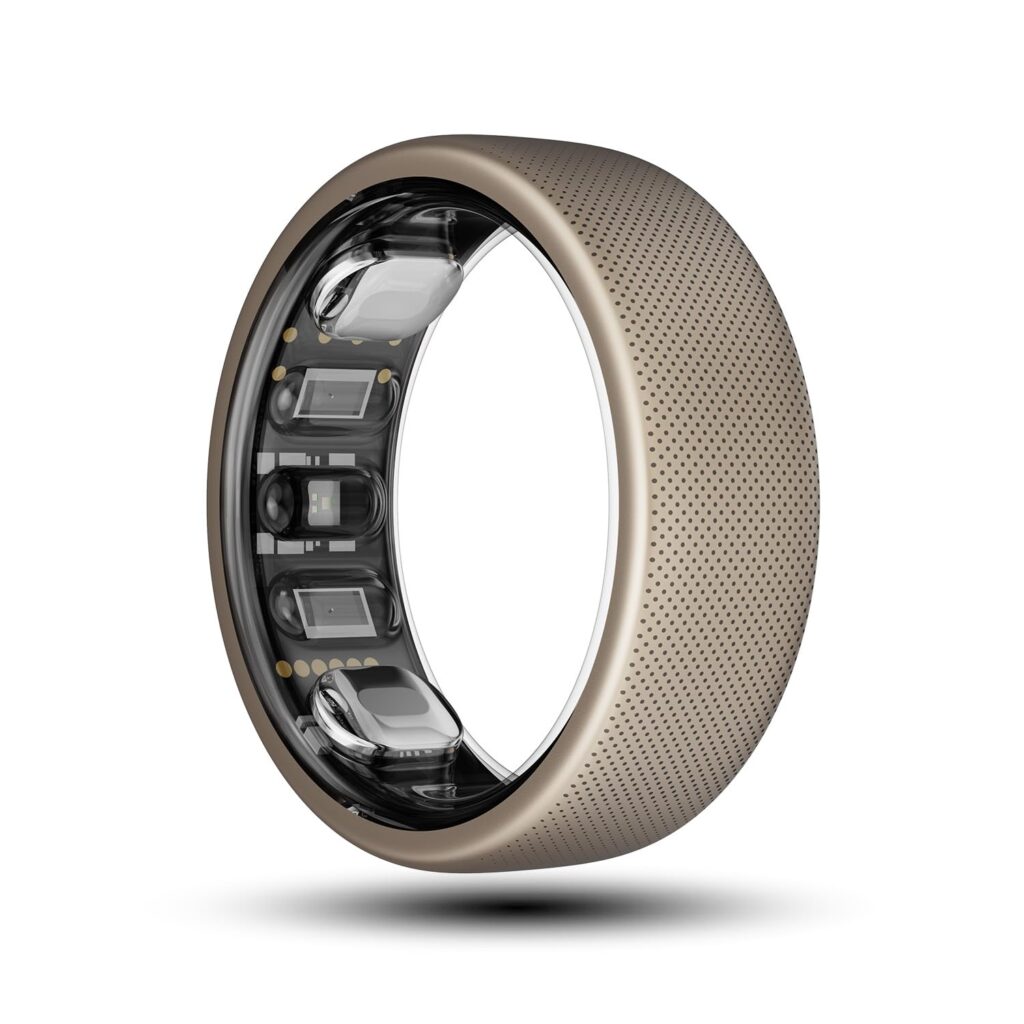
Amazfit Helio Ring
Key Features:
No subscription needed
Basic sleep & activity tracking (heart rate, SpO2)
4-day battery life & swim-proof (5ATM)
Works with Amazfit watches for merged data
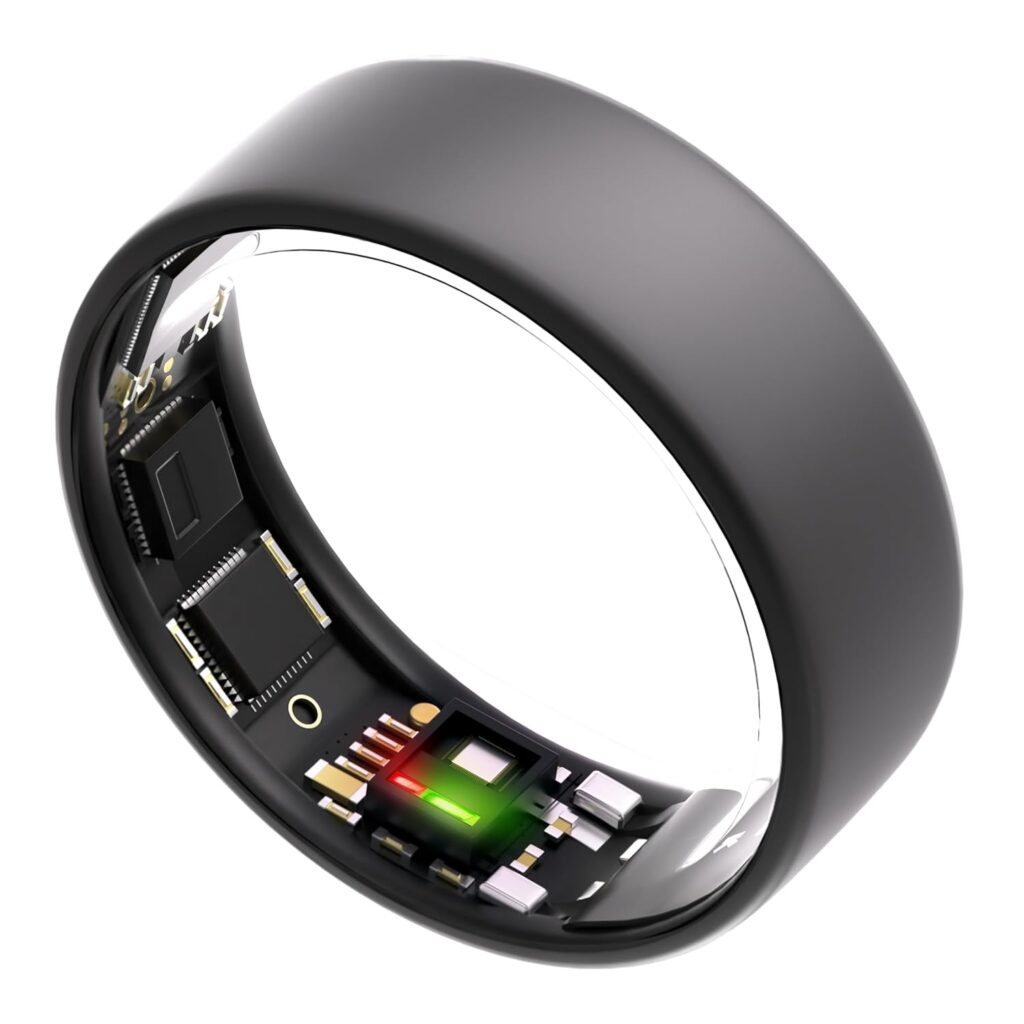
Ultrahuman Ring Air (Subscription-Free Alternative)
Key Features:
No subscription & detailed circadian rhythm insights
6-day battery life & ultra-lightweight (2.4g)
AI-powered caffeine/sleep recommendations
Scratch-prone (avoid matte black)
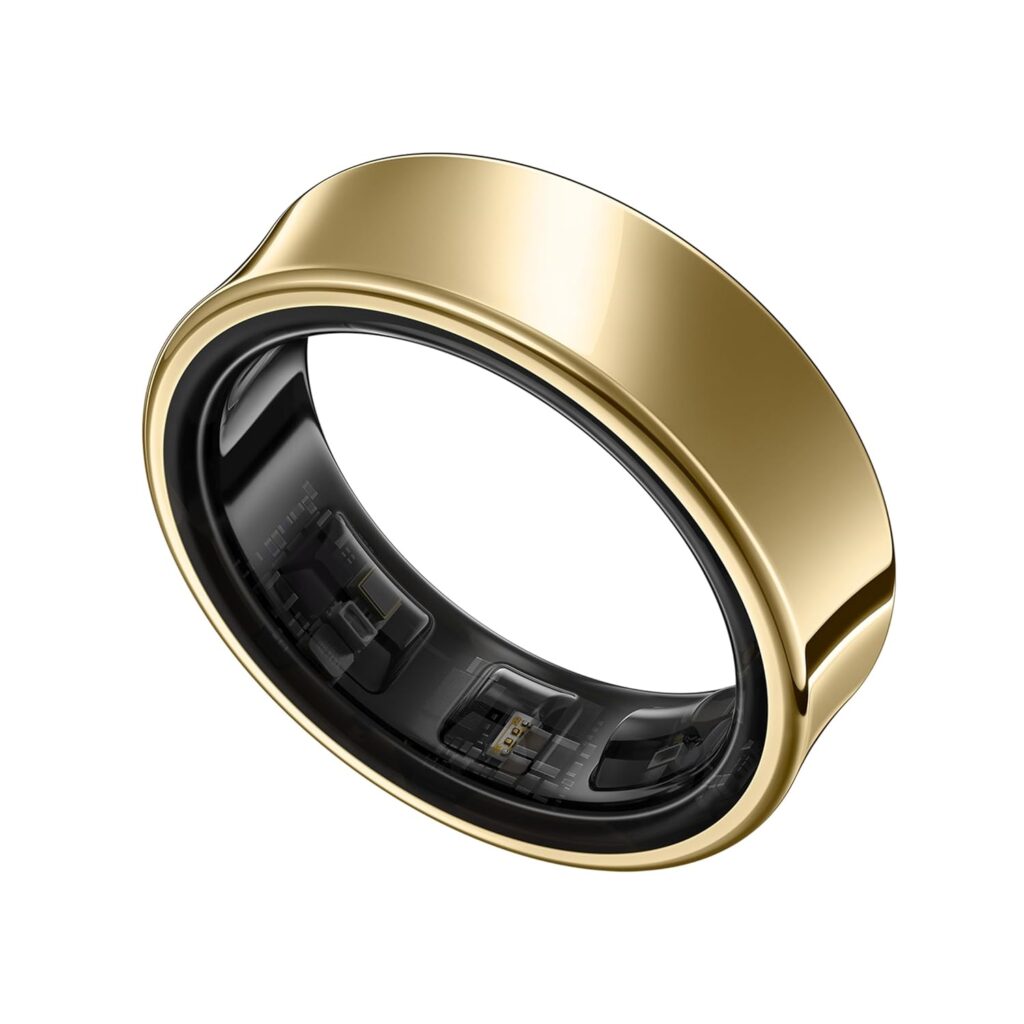
Samsung Galaxy Ring – AI Smart Ring (Size First)
Key Features:
AI Health Coaching
3 Advanced Sensors
7-Day Battery
Sizing Kit First (Try plastic samples before final purchase)
Smartwatch Ideal User: You want an on-wrist hub for calls, messages, apps, and detailed fitness tracking. You appreciate a larger display, real-time workout stats, and the ability to go phone-free on runs or errands. Style versatility and a rich app ecosystem are also important to you.
Smart Watches

Amazfit Bip 6 Pro Smart Watch
Features:
14-day battery life
Built-in GPS, 60+ sports modes
Heart rate, SpO2, sleep tracking
5ATM waterproof (swim-proof)
50+ customizable watch faces

Garmin Forerunner 255 – GPS Running Smartwatch
Features:
Advanced Fitness Tracking
14 days Battery Life
HRV Status, SpO2, sleep monitoring
5ATM waterproof (swim-proof)
Garmin Pay (NFC payments)
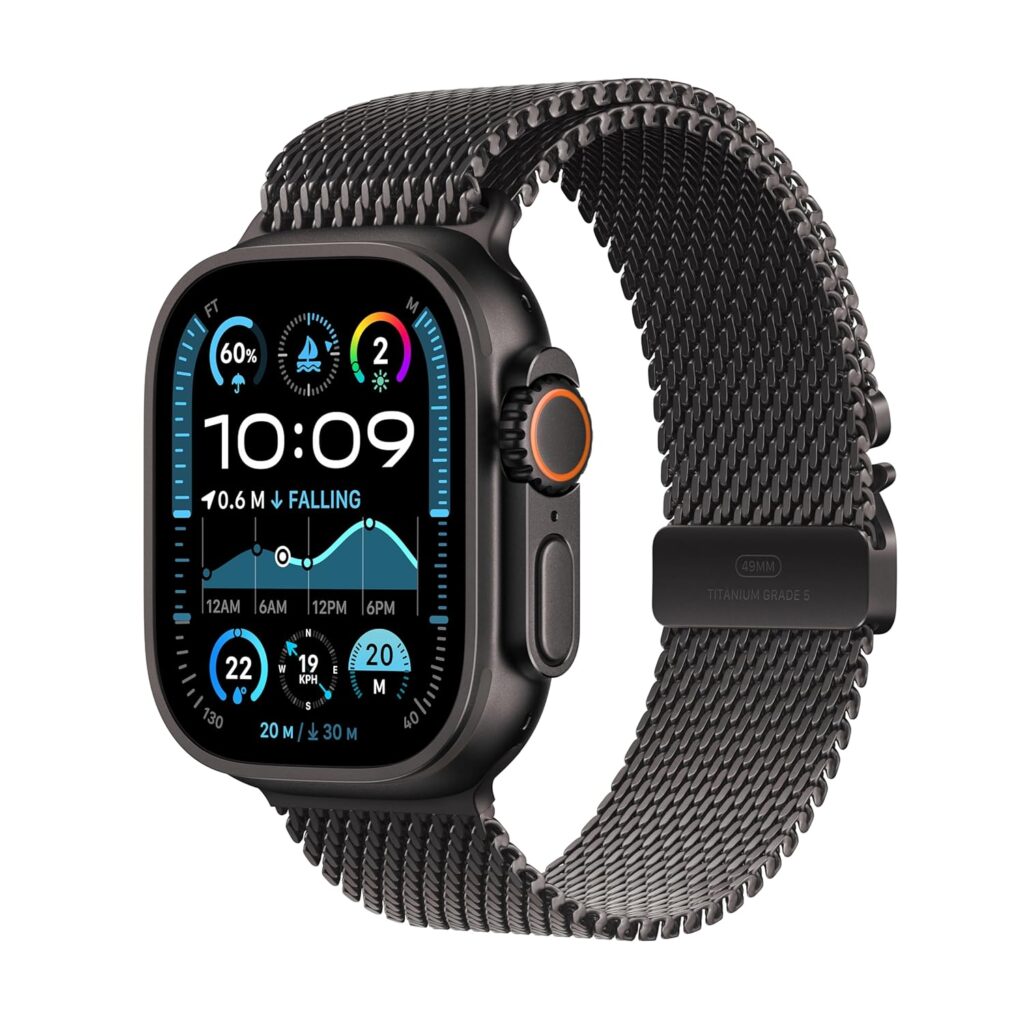
Apple Watch Ultra 2 (Premium Pick)
Features:
Cellular connectivity (works without a phone)
Advanced health sensors (ECG, blood oxygen)
49mm Retina display
Rugged design for extreme sports
Ultimately, smart rings and smartwatches cater to slightly different needs. By weighing battery life, comfort, health-tracking depth, interaction style, app support, and budget, you can choose the wearable that seamlessly integrates into your lifestyle and empowers you to achieve your wellness and productivity goals.

